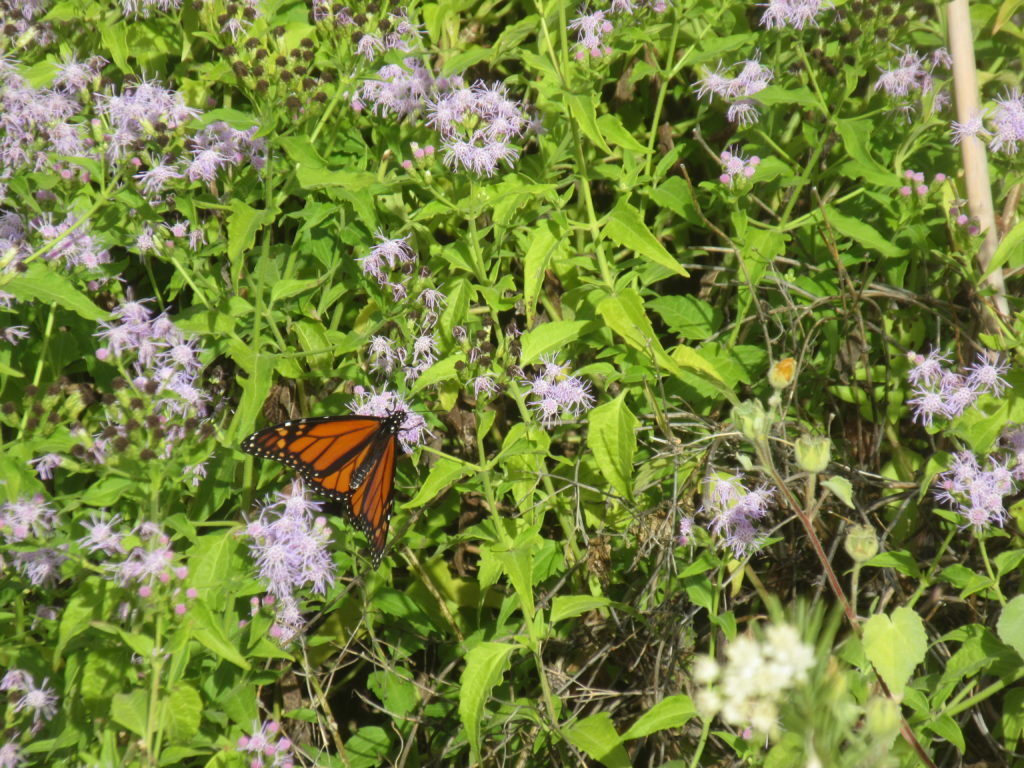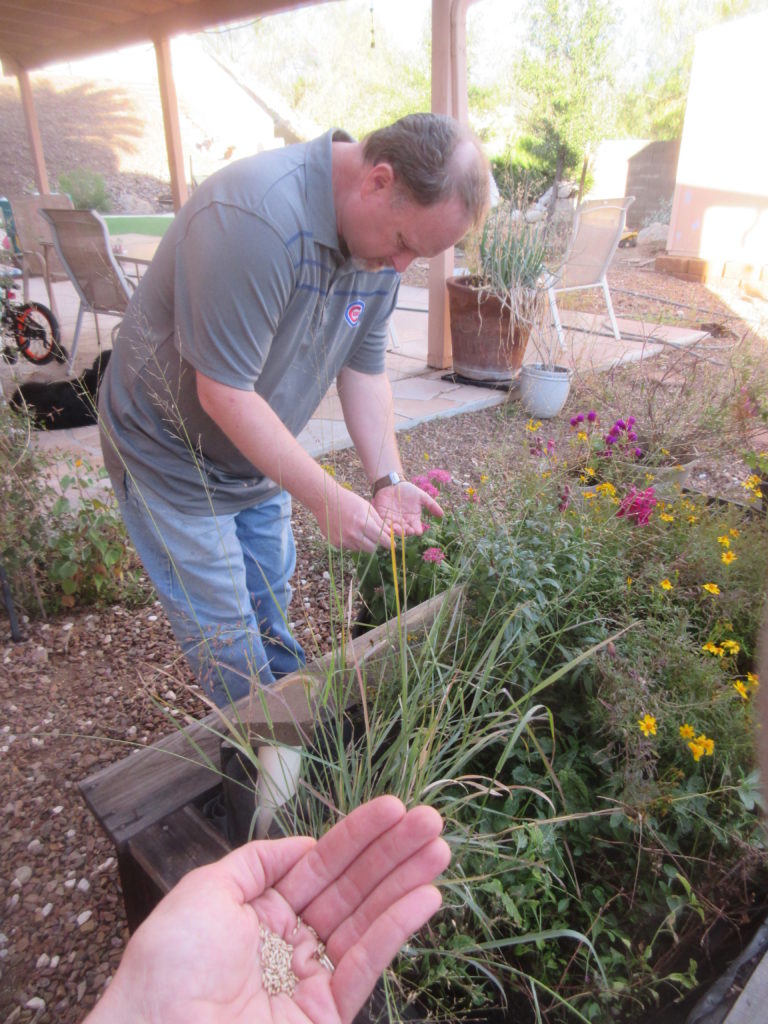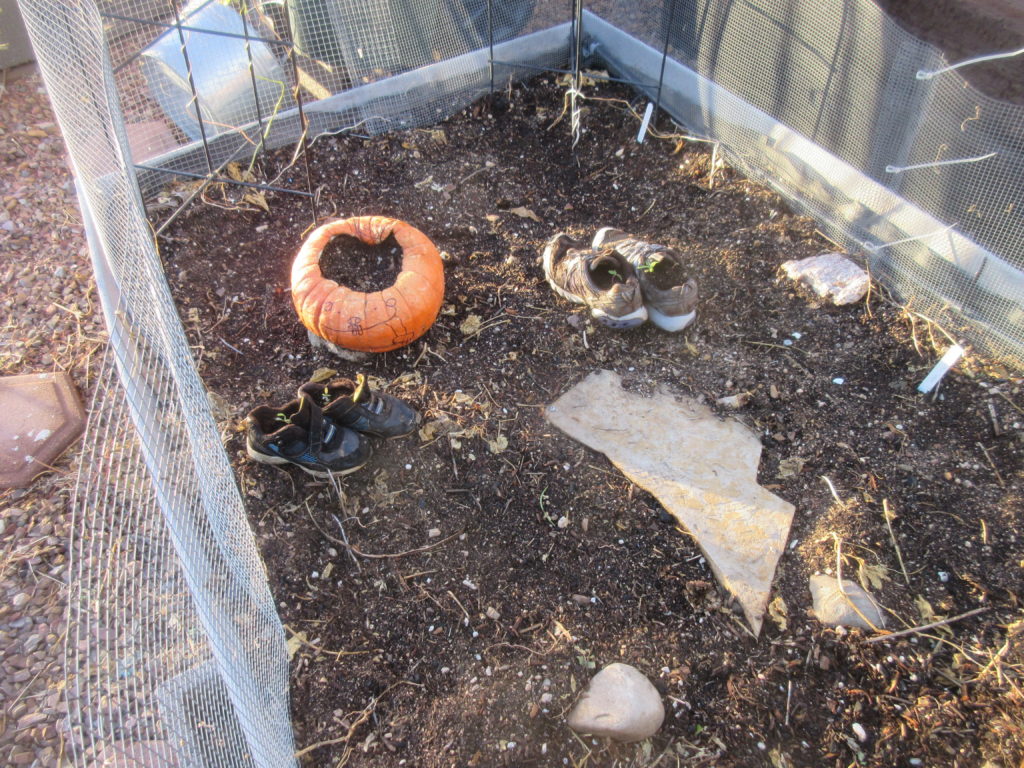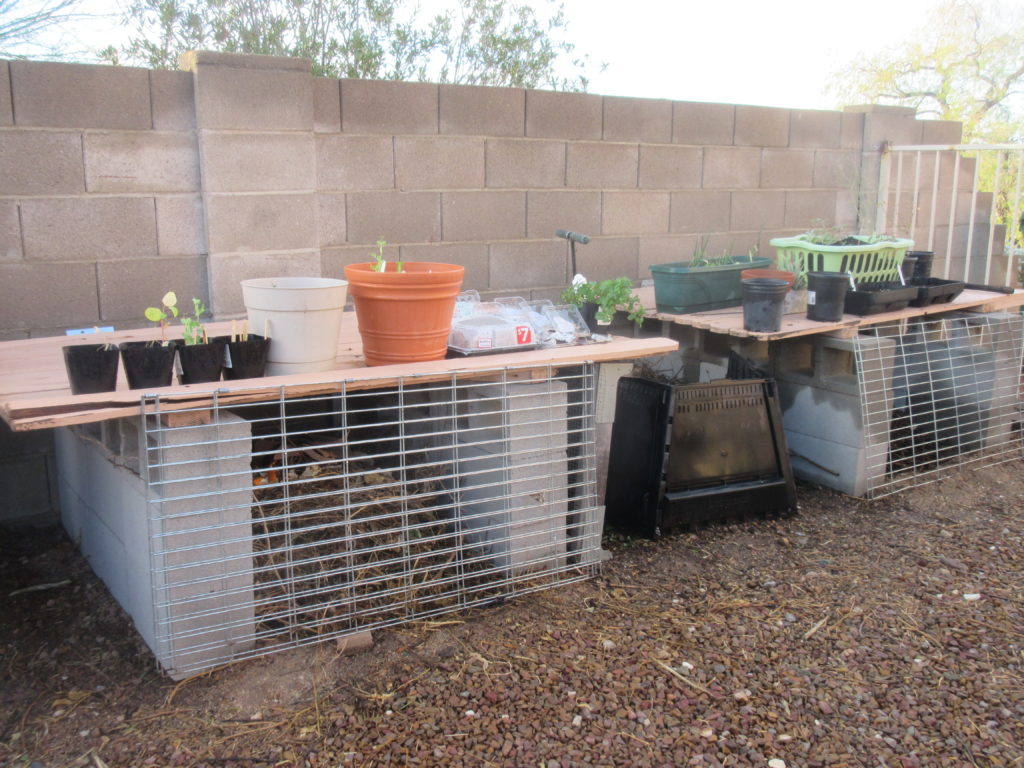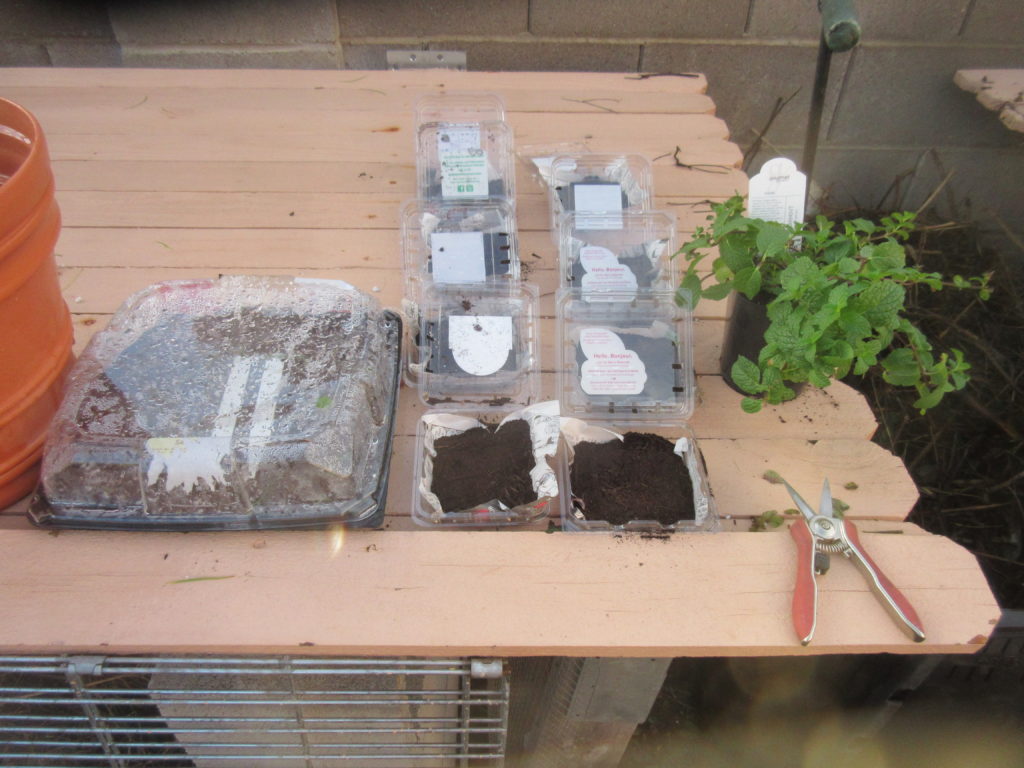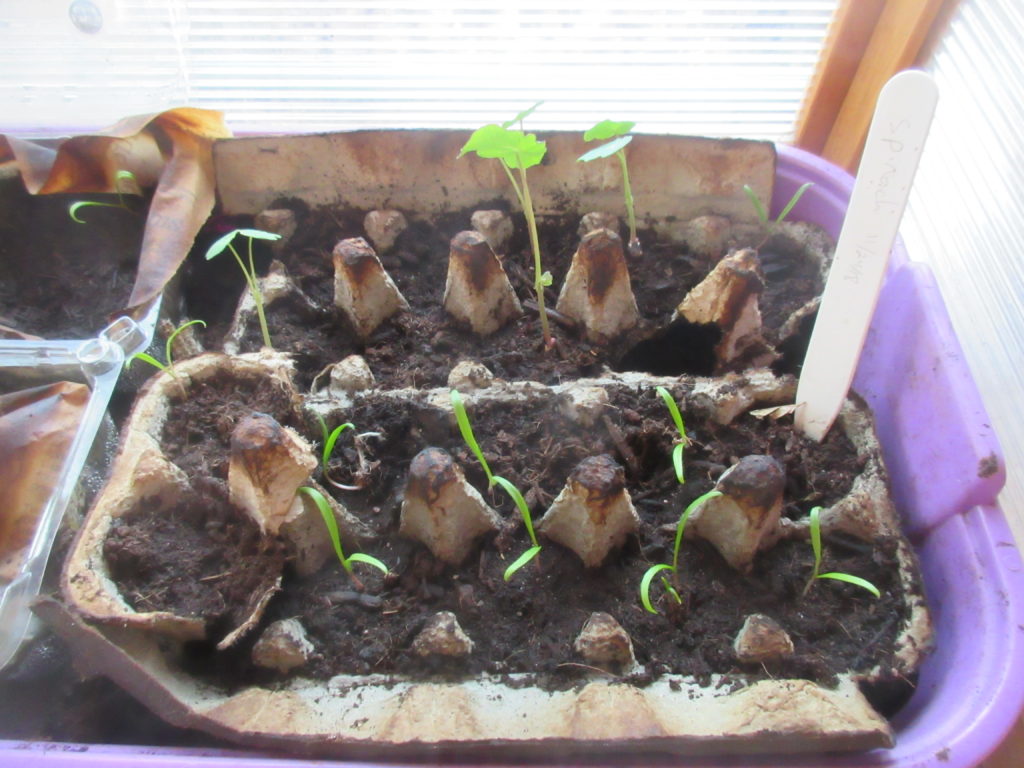“Can I show you my new babies?” I beckon my husband on the way out of the house. I proudly open the doors of my mini-greenhouse on the front patio. Inside, humble trays of soil hold tiny specks of green: sprouts of chamomile and bluebells. Above them are more trays with bolder sprouts of nastursiums and spinach. By chance, the seed leaves (first leaves) of those greenhouse neighbors are long and thin, in contrast to the petite circles of the chamomile and bluebell leaves. I part with sweet encouragement to them all and close the doors to help maintain warmth and moisture as we head into winter.
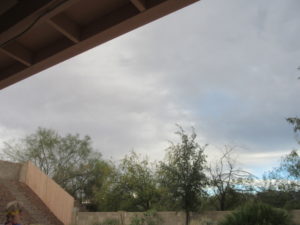
It’s the beginning of December – or was when I started composing this piece – and the middle of cool season planting time. The comfortable temperatures and some gentle rain especially this year compared to last beckon plants to grow and people outside to grow them. Did you know that you can, too? Selection matters: Wildflowers, leafy greens, and root veggies are your ticket to low-maintenance winter gardening.
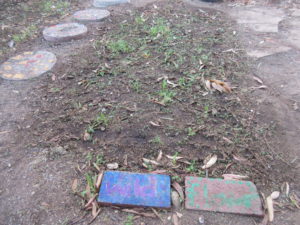
Flowers
In the wild, October temperatures and gentle rain signal dormant wildflower seeds to sprout on the desert floor and slopes. You can aid this process in October and November – the beginning of the cool season in Tucson – by spreading purchased or collected seed and supplementing with more water. My students at Miles ELC have had the strongest results in sunken beds, and localized depressions where water collects from wider areas. At home, and at Butterfield Elementary where I volunteer, I tried planting outdoor pots of wildflowers this year. They are not doing much. But the lupines are coming out from under the rocks below, and some poppies too, from last year’s seeds returning for a new show! My greenhouse bluebells are encouraging too. Will they accept the transplant to bigger pots and colder air?
Food
Spinach is in the lead at home this year. Plants I started both in a raised container and transplanted from egg carton trays are now yummy to add to salads. I’m especially pleased, because my spinach attempts the last few years have been floppy and yellow. Strong green leaves now have nudged me to start more. If you take a Nature to You class in January or February, a few of those starts could find a home in your garden too!
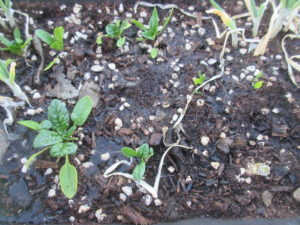
Similarly, the lettuce and carrots at Miles are taking off in the raised veggie beds. I’m getting better at the “successive planting” technique of having kids add more seed even while earlier plants are still strong. We can eat what’s fresh and ready and look forward to more after Winter Break. That’s one of the beauties of cool season gardening here: your planting window is roughly October through February, and with enough water some of those plants will keep you happy well into spring!
Another benefit of planting now is simply that you CAN. A colleague I invited to visit the Miles garden a few weeks ago replied, “Maybe in the spring,” thinking now was a dormant time. A Butterfield teacher observing enthusiastic kindergarteners watering their young sugar snap peas voiced concern that the plants would freeze soon. Nope! Snap peas and lettuce enjoy a light frost. And I’m just now finding time to write this article because it’s been such a busy time planting at home and at work. True, it’s necessary to retire the corn, zucchini, and beans that loved the summer. Fall harvest time is real. And if you have tomatoes or strawberries, they will only survive with cover and TLC on cold nights. Choose how much work you feel like doing outdoors, then look for “cool season” labels and “for warmer climates” instructions on seed packets.
Busy butterflies, and more!
A hearty blooming season for my landscape plants has meant months of butterfly sightings at home. The cool temperatures were also the re-set I needed to tackle a backyard project that had been on paper for over a year. Below is a gallery of ways I enjoyed fall this year. What has brought delight to your yard? What help can you use to continue gardening in winter or start something new? Happy Holidays from Nature to You!
